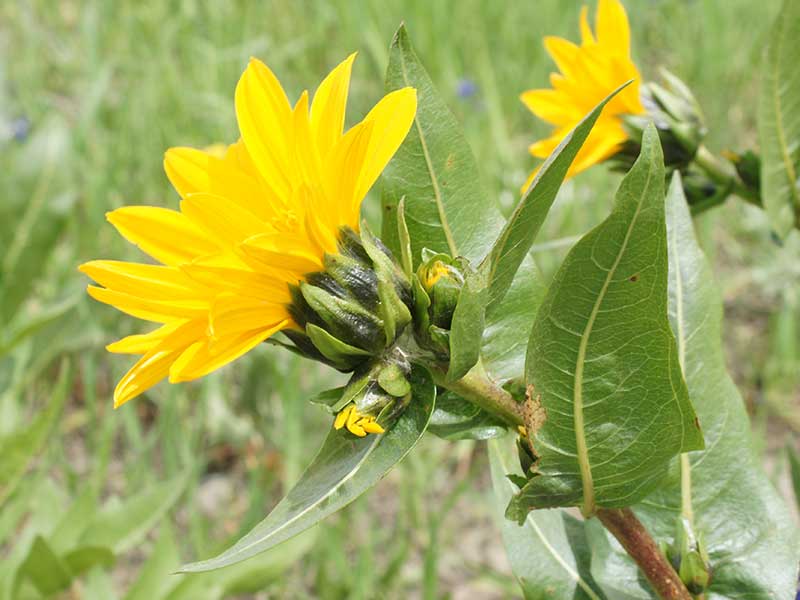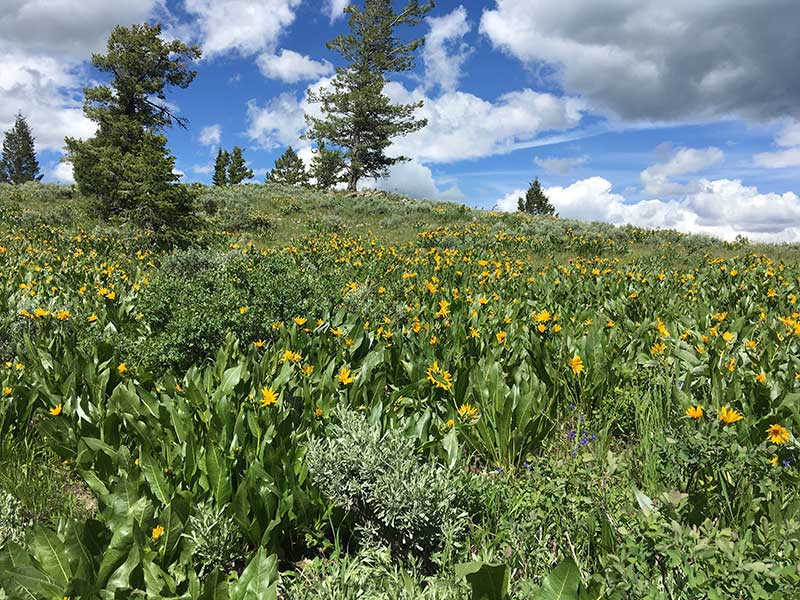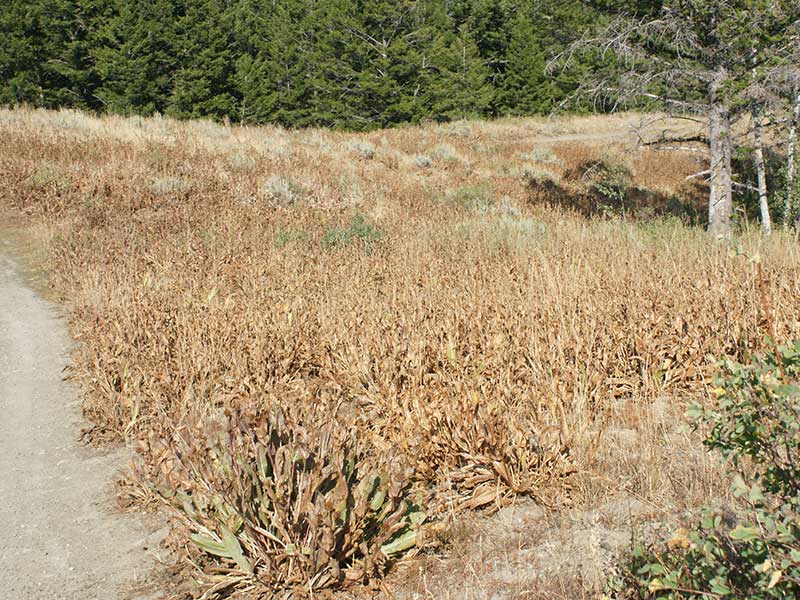Wyethia amplexicaulis / yellow mules ear
- blooms in late June, July
- large yellow sunflower-like central flower, smaller additional flowers
- long, shiny, not-hairy leaves – like green mule’s ears
- strongly aromatic
- may cover acres, almost as a monoculture
- crunchy in the fall
Also known as: northern mule ears, black sunflower, yellow mule’s ears
See also: Balsamorhiza sagittata / arrowleaf balsamroot
Yellow mules ear is a herbaceous perennial with a big yellow, sunflower-like inflorescence. The “main” flower is often surrounded by smaller but similar flowers. It is most abundant in mesic sagebrush (Artemisia spp.)-grassland habitats. Although it prefers moister areas than balsamroot, it is drought tolerant. It is not unusual to come across many acres covered with this species, one example location being the hills to the south of the Pine Creek Pass parking lot.
One would think that the flowers should be the defining characteristic; the problem is that they look very much like those of arrowleaf balsamroot. The huge stands possible with this species, the leaves and the flowering time are really the field marks to distinguish the species. In the case of mules ear, the leaves are very long (up to 20-ish inches), and more lance shaped than triangular… more resembling, of all things, mules’ ears. They are hairless and thus bright shiny green rather than silvery grey. Indeed, they have sometimes been described as having a “varnished” appearance. Mules ears usually blooms several weeks after balsamroot, i.e. late June and into July, rather than May and into June.
Another difference, though not in the category of field marks is that mules ear is not edible unless you are a goat.
Mules ear has a stout taproot that can reach depths of over 6 feet. A network of strong lateral roots run 3 to 4 feet from the main root and new plants can arise from those, especially if the above-ground structures are damaged.
This root system thing has a number of consequences. On the one hand, it helps make mules ear highly competitive and aggressive… it tends to monopolize soil moisture. Since it really gets its foothold (or root hold) in areas where there has been severe (over)grazing pressure, this means that more palatable grasses and forbs have a hard time coming back. But on the other hand, the root system can help prevent erosion of otherwise damaged land, making it valuable for reclamation purposes.
As early as 1898, mules ear was recognized as a problem weed in Idaho. But then, so were arrowleaf balsamroot, and sunflower. I guess anything that stood in the way of a plow or a cow was considered a problem, no matter whether the land was actually suitable for those invasives or not. The plant is also cursed by hunters as the dried out plants in the fall are really crunchy and loud.
One last thing… why it might be called “black sunflower” is a mystery to me.
| Color | |
|---|---|
| Family | |
| Blossom size | |
| Inflorescence size | |
| Inflorescence type | |
| When? | |
| Where? |





